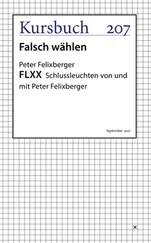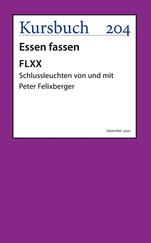“What do you think’s causing that?” the farmer asked.
“I don’t know,” Atkins said. And he meant it. He’d read about “earthquake lights,” but had never seen them before. Most seismologists—himself included—were skeptical about such lights, even in the face of some fairly dramatic reports. The light show—and according to the descriptions, it could be even more spectacular than this—usually happened before or during an earthquake. The entire sky had reportedly lit up like the northern lights just before a powerful quake struck in Italy in May 1976. More recently, twenty-three spottings of earthquake lights were reported in and around the Japanese city of Kobe before the 7.2 magnitude quake on January 17, 1995. Most appeared as streaks of lightning, arcs of light, or quivering fan-shaped bands of color that appeared to rise above the ground.
They differed substantially from the northern or southern “auroral” lights, which were caused by solar storms that sent energy pulsing into the upper atmosphere along magnetic field lines. The auroral lights were usually seen in northern latitudes, more rarely in southern. They tended to be green or yellow. Earthquake lights were usually blue, white, or orange.
Sightings of earthquake lights were plentiful but good photographs of the phenomenon were rare. They’d often been reported along the coasts of northern California or Mexico, frequently just offshore. Their origin remained a mystery. One theory suggested that the main cause might be the discharge of polarized electricity from rocks during heavy ground shaking.
Atkins stepped out of the pickup. Harvey got out on the other side. The lights that continued to hover over the hills were more vivid now. It looked like sheet lightning.
Atkins wished he had a tape recorder to dictate his description. Or a camera.
“Ben,” he said to the farmer. “I’ll need to get back to Memphis first thing in the morning. I’ll take my chances with the ice.”
SANTA MONICA
JANUARY 9
10:25 P.M.
OTTO PRABLE’S OFFICES WERE JUST OFF WILSHIRE Boulevard in Santa Monica, a low-rise, nondescript building that he owned. Elizabeth Holleran drove straight there after watching the video again. She used the key he’d sent her to open the front door.
Her heart was pounding when she stepped inside. The walls to the spacious office were covered with graphs and color-coded maps that showed the earth’s topography in sharp detail. There was also an array of weather charts—rainfall, river stages, and flood projections from the Army Corps of Engineers. The most recent reports were only four days old. And from the way they were filed, it appeared to Holleran that Prable had worked almost up to the time he took his life.
On a table that ran the entire length of the room, eight computer terminals were arrayed. Holleran almost gasped when she saw them. They were all Sun Spare 10s, exceptionally powerful computers with a prodigious megabyte capacity. They cost around $40,000 apiece. Holleran’s department had only two of the machines, and on-line time was at a premium. She’d never seen so many of them in one place.
Prable was linked through his computer network to the National Weather Service forecasting bureau in Kansas City, the National Oceanic and Atmospheric Administration in Boulder, the National Geomagnetic Information Center, and the National Earthquake Information Center.
Most of the data was in real time. His computers—all were in the “sleep” mode—captured the information the moment it was produced by the host computers.
Prable even had his own analogue seismograph, which was mounted in a glass case next to what must have been his principal work desk, a kidney-shaped expanse of polished cherry.
Holleran also noticed the direct computer linkup with the Global Positioning System.
She sat down at Prable’s desk and logged on to his personal computer, using a password he’d provided: GINNY, his wife’s middle name. The first file to appear on screen was a series of color images taken by the Solar Maximum Mission Spacecraft. She remembered Prable’s controversial ideas about the triggering effects of solar activity on earthquakes. The eight photographs arrayed on the computer’s color monitor were a time-lapse chronograph of a recent coronal mass ejection, or CME, from the sun.
It resembled a hazy gas bubble forming on the surface, rapidly expanding frame by frame until it blew up in long tendrils of brilliant white light, the violent birth of a solar windstorm. The CME images were provided by the High Altitude Observatory of the National Center for Atmospheric Research in Boulder.
Holleran clicked onto another icon. Prable had plotted the approach of this solar windstorm toward earth.
Peak solar activity was predicted for January 16, one week away. Prable’s computer graphics showed how the winds were expected to affect the earth’s magnetosphere on or about that date. When this solar shock wave hit the earth, Prable had calculated that it would set off a geomagnetic storm strong enough to alter the tides as well as satellite transmissions. And possibly set into motion a chain of events that might result in an earthquake somewhere in the New Madrid Seismic Zone.
Holleran scanned the data with increasing skepticism. It had started eating at her even as she watched Prable’s video. The relationship between earthquakes and such phenomena as solar storms, the tides, and gravitational pull was simply too remote and unproven for her to take seriously. She’d never been able to buy into such theories, which were far outside the scientific mainstream. She found herself sitting there wondering how a man of Prable’s brilliance could have gone so far astray from his original discipline of geophysics. The waste of it all saddened her.
One of the files contained his analysis of stress buildup along the fault. Holleran found that data far more interesting.
Using two-dimensional computer graphics, Prable demonstrated how ground in the seismic zone had experienced a gradual uplift that started approximately a hundred miles north of Memphis. In one three-hundred-square-mile sector, the ground had risen as much as seven centimeters over four years. That was a huge, rapid change. The computer’s graphic presentation of this deformation was outstanding. It showed a dome-shaped uplift, which strongly suggested large, horizontal movements deep underground and a buildup of tectonic strain energy.
Holleran switched to a file named: Earthquake Projection Data.
For the rest of the long night, she pored over Prable’s computer analysis of an earthquake risk along the New Madrid Seismic Zone. She was impressed by his marshaling of facts. It was an amazing compilation of data, seemingly disparate, but all focused on a single seismic event.
He’d even provided a statistical analysis of the probability of a major quake on the New Madrid Fault. It was crucial information, for without a probability assessment—an indication of the odds of a quake happening—a prediction was meaningless. Holleran doubted such an assessment was remotely possible based on the data he used, most of which she found seriously flawed. With the exception of uplift along the New Madrid Seismic Zone, it seemed to her the assembled facts had little if anything to do with seismology. She found herself repeatedly questioning his conclusions and much of his data.
Holleran sat in front of the computer monitor, fighting the onset of a headache and wondering if his terminal illness had made Prable irrational, even slightly crazy. His earthquake data, in her opinion, had little or no validity. It was almost pseudo-science.
The one exception, the fact that troubled her, was the degree of deformation he’d found north of Memphis. She hadn’t been aware of that. It was quite large. She was sure seismologists at the University of Memphis—they had several good ones—were tracking it. She’d met one of them, the head of the university’s earthquake center. He was considered the country’s leading authority on the New Madrid Fault. She couldn’t remember where they’d met. Probably some conference. She’d try to run down his name and call him in the morning or send an E-mail.
Читать дальше












